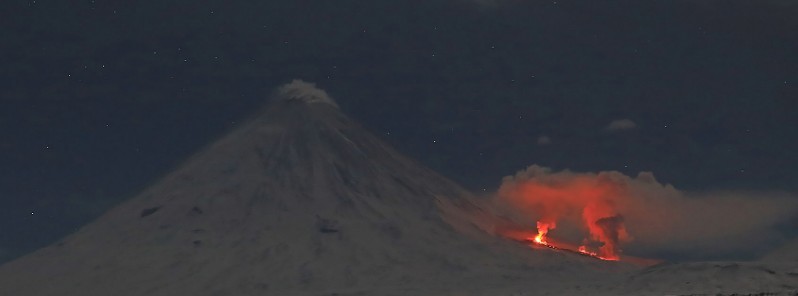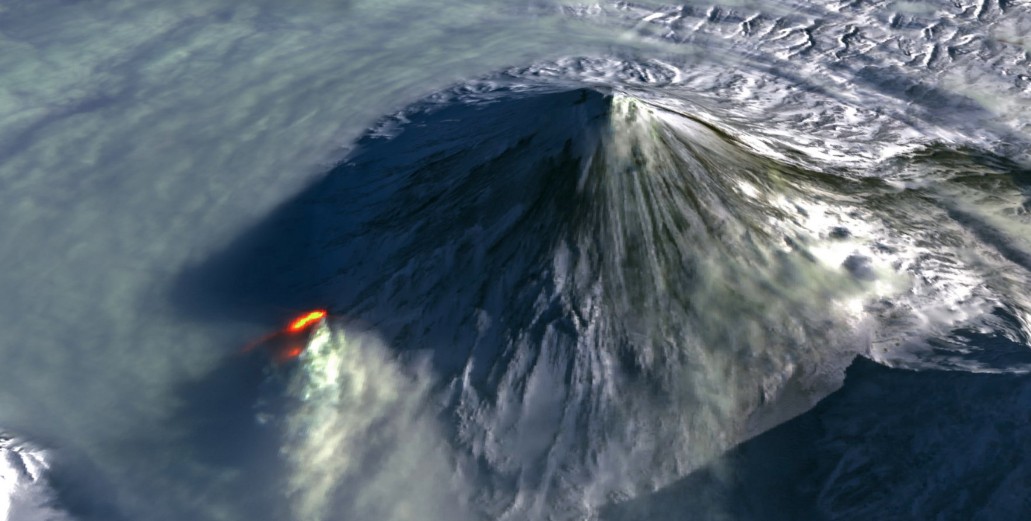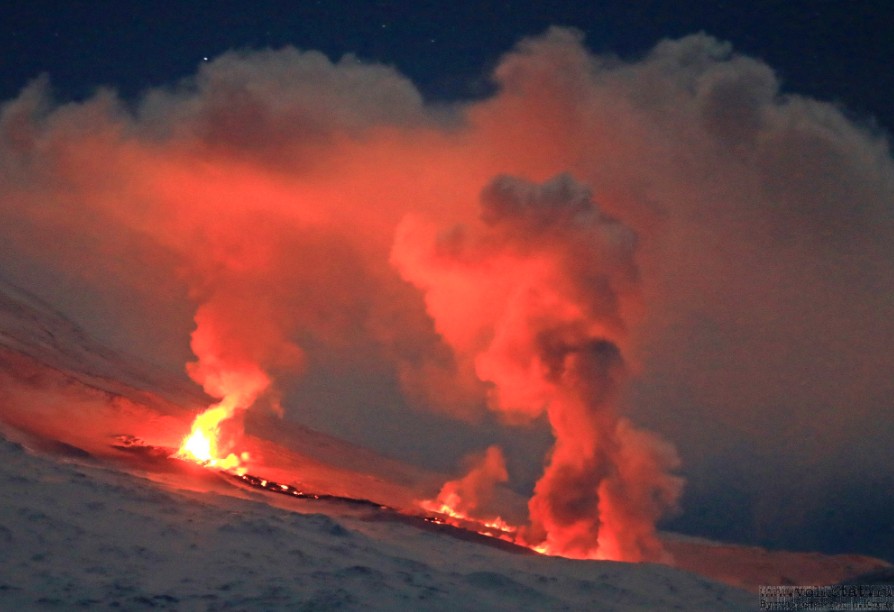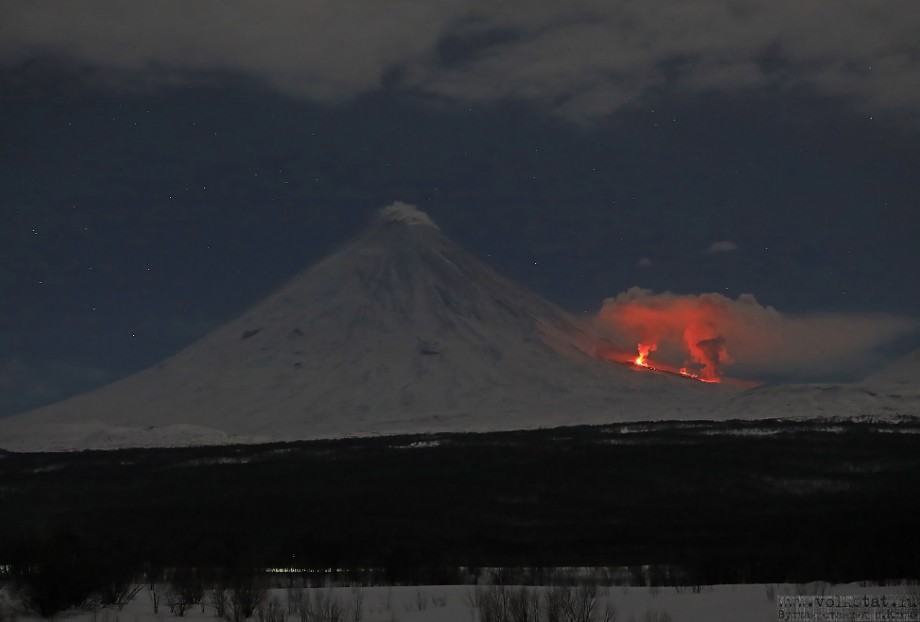Flank eruption at Klyuchevskoy volcano, lahar forms along the Krutenkaya River, Russia

A flank eruption began to form on the northwestern slope of the Klyuchevskoy volcano, Kamchatka, Russia late February 17, 2021, presenting a real danger of mudflows for the Kyuchi village.
Bright incandescence was observed at video-data by IVS FEB RAS from 15:23 UTC on February 20, when a lava flow began to move from a lateral break at an altitude of about 2.5 – 2.7 km a.s.l. (1.5 – 1.6 miles) near the Erman glacier.
The Aviation Color Code was raised to Orange at 02:06 UTC on February 24.

Image credit: Copernicus EU/Sentinel-2, ADAM Platform, Antonio Vecoli
Bright incandescence over two craters of the flank eruption continues on satellite and video images, KVERT said, adding that lava flows are still moving from the craters.
The intensive melting of the glacier led to the formation of a lahar along the Krutenkaya River, about 7 km (4.3 miles) east of the Klyuchi village on February 23.
Moderate gas-steam activity of the volcano continues on February 24. The danger of ash explosions up to 5 – 6 km (16 400 – 19 700 feet) a.s.l. from flank craters remains. Ongoing activity could affect low-flying aircraft, KVERT warns.

Flank eruption at Klyuchevskoy volcano on February 23, 2021. Credit: Alexey Demyanchuk/Volkstat.ru

Flank eruption at Klyuchevskoy volcano on February 23, 2021. Credit: Alexey Demyanchuk/Volkstat.ru
Geological summary
Klyuchevskoy (also spelled Kliuchevskoi) is Kamchatka's highest and most active volcano. Since its origin about 6 000 years ago, the beautifully symmetrical, 4 835 m (15 862 feet) high basaltic stratovolcano has produced frequent moderate-volume explosive and effusive eruptions without major periods of inactivity. It rises above a saddle NE of sharp-peaked Kamen volcano and lies SE of the broad Ushkovsky massif.
More than 100 flank eruptions have occurred during the past roughly 3 000 years, with most lateral craters and cones occurring along radial fissures between the unconfined NE-to-SE flanks of the conical volcano between 500 m and 3 600 m (1 640 – 11 811 feet) elevation.
The morphology of the 700 m (2 296 feet) wide summit crater has been frequently modified by historical eruptions, which have been recorded since the late-17th century.
Historical eruptions have originated primarily from the summit crater, but have also included numerous major explosive and effusive eruptions from flank craters. (GVP)
Featured image: Flank eruption at Klyuchevskoy volcano on February 23, 2021. Credit: Alexey Demyanchuk/Volkstat.ru

Commenting rules and guidelines
We value the thoughts and opinions of our readers and welcome healthy discussions on our website. In order to maintain a respectful and positive community, we ask that all commenters follow these rules.